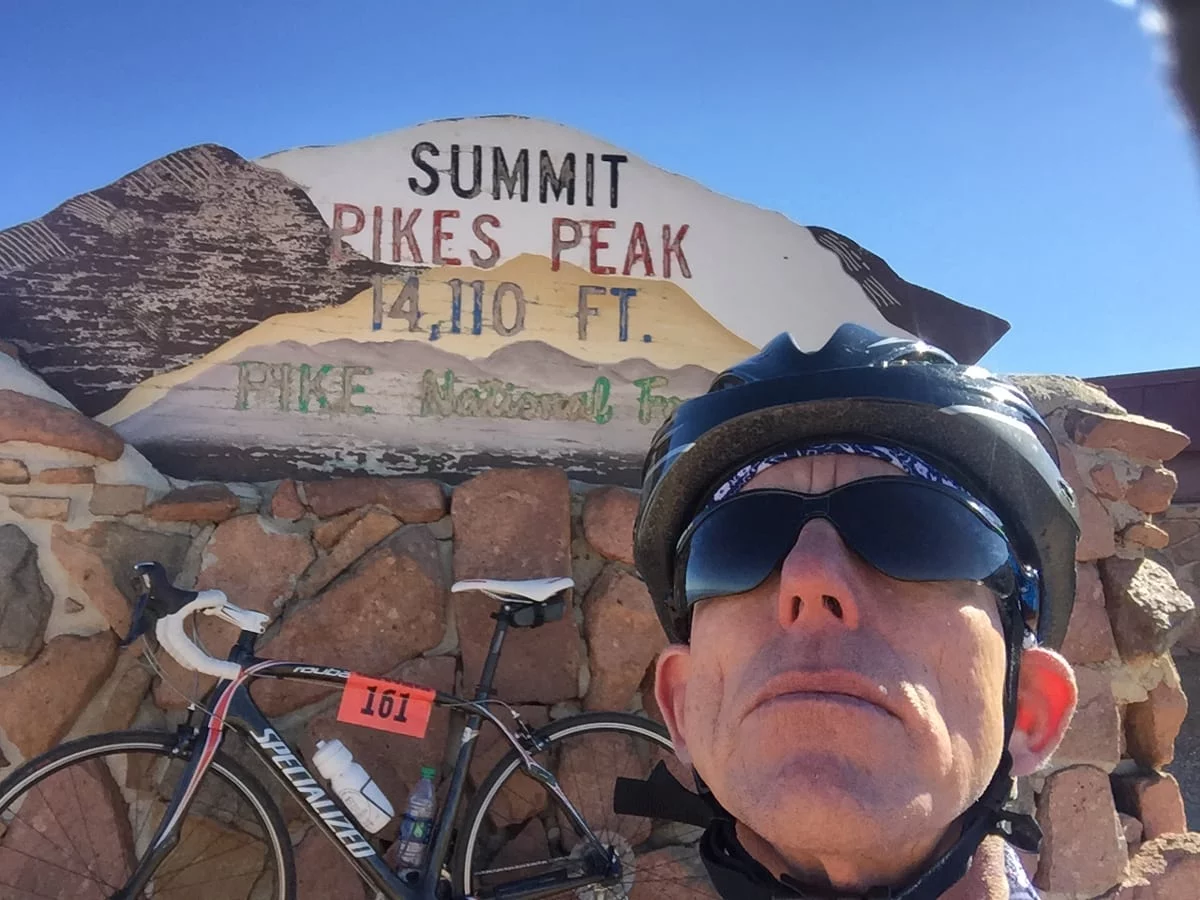Independence Pass. Pikes Peak. Mount Evans.
They’re notches on the belt, or maybe checkmarks on the bucket list, for many cyclists who visit Colorado to partake in the challenge as well as those who call Colorado home.

For Granby, Colorado, resident Rich Trostel, bike time is his time – a chance to exercise, be outside, and enjoy fresh air and the beauty of nature.
“You don’t get to appreciate nature until you get out in it,” Trostel believes.
Slowly going downhill
When Trostel goes mountain biking, he travels about 15 miles at a time. On his road bike, he ranges 30 to 60 miles per ride. He likes the challenge of a good climb, but doesn’t consider himself a very technical mountain biker.

“I’m not a downhill mountain biker who rides the ski lift up,” he said.
Over the past three to five years, Trostel, 55, began noticing some pain and stiffness in his right knee, and he chalked it up to his love of the sport. Progressively though, it kept getting worse.
“I hate going to the doctor and usually wait until things get pretty bad before doing something about it,” he said. “Anytime I’d do a lengthy hike or bike ride, I’d pay the price with knee pain and discomfort.”
He turned to his family physician, who administered cortisone shots for a period of time, but each injection only provided a day or two of pain relief. He then received a referral to Dr. Alexander Meininger, an orthopedic sports medicine surgeon and member of the medical staff at UCHealth Yampa Valley Medical Center in Steamboat Springs.

Trostel received orthopedic x-rays and a diagnosis of osteoarthritis. Meininger recommended attempting another cortisone shot, but Trostel still saw the same results from the injection.
“We talked for a while, about what the next options might be,” said Trostel. “We decided to try Orthovisc treatment.” During the treatment, Meininger injected hyaluron acid, a component of synovial fluid, the lubrication that occurs naturally in the joints, into Trostel’s knee in hopes it would provide some relief.
“I received a series of three shots, each a week apart,” said Trostel. “Some people have results; unfortunately, I didn’t.”
Stem cell injections were another option for arthritis, but they weren’t covered under Trostel’s insurance and were quite expensive. Plus, with mixed results, it was a gamble to go that route and not have it work. That left the one option – a unicompartmental right knee arthroplasty. Often known as a partial knee replacement, the procedure involves replacing the worn out cartilage only on the damaged side of the knee where arthritis and inflammation are causing pain, leaving the intact cartilage in the rest of the knee undisturbed.
Knee replacement during ‘shoulder season’
Trostel specifically scheduled his procedure for the winter – Feb. 21 – so the surgery, recovery and rehab would be done in time for summer activities.
During his pre-surgery appointment, Meininger shared with Trostel that depending on how the surgery went, he could possibly be a candidate for a same-day discharge. He was healthy and didn’t have any other medical concerns.

“That intrigued me, being that I’m not a fan of doctors’ offices and hospitals,” said Trostel. “It all depended on how things went in the operating room and how I did following the procedure.”
Trostel and Tracy, his wife of 29 years drove to Steamboat Springs the night before the procedure. The next morning, they arrived at Yampa Valley Medical Center.
“It all happened so fast after we arrived,” he recalls. “The prep, the procedure itself. We felt very well informed. Once I was out of recovery and cleared to discharge, I was ready to go. I wanted to get home and start the healing process.”
Gearing up
Back in Granby, Trostel had his first physical therapy appointment four days after surgery.
“I didn’t want rehab to be a long drawn-out process,” he said. “I knew if I sat around and didn’t do anything, it would just prolong the rehab situation. I wanted to make sure I did what the doctor and physical therapist told me to do.”
Trostel had high expectations for his recovery and a desire to ride again as soon as possible.
“At my post-op appointment two weeks after surgery, Dr. Meininger had to tell me a couple times that I was doing well with my recovery,” Trostel said. “As a biker himself, it was nice that he understood my perspective and desire to get back to biking.”
Back on the bike
On May 5, just 10 weeks following surgery, Trostel buckled on his helmet for his first ride. He took his road bike on Highway 40 from Granby, approximately seven miles west of Parshall and back, for a total of 45 miles.
The next day, he rode from their home on the Granby to Fraser Trail until he reached Granby Ranch Ski Area, where he had to turn around due to lingering snow and mud. That was a 12 mile ride.
Over Memorial Day weekend, he headed to the Red Rock Canyon Open Space outside Colorado Springs. Although the rear shifter on his bike broke only 4.5 miles into his ride, he was able to complete 14.5 miles on the trails the first day.
“Physically, the knee has felt good,” Trostel said. “I haven’t been nervous to put my knee to the test, but have been a little concerned about the possibility of crashing, which I do sometimes, and causing significant injury to my knee.”
“Ice after a ride helps,” he said. “I was tired after that ride in Colorado Springs, but nothing a cold IPA couldn’t fix.”
